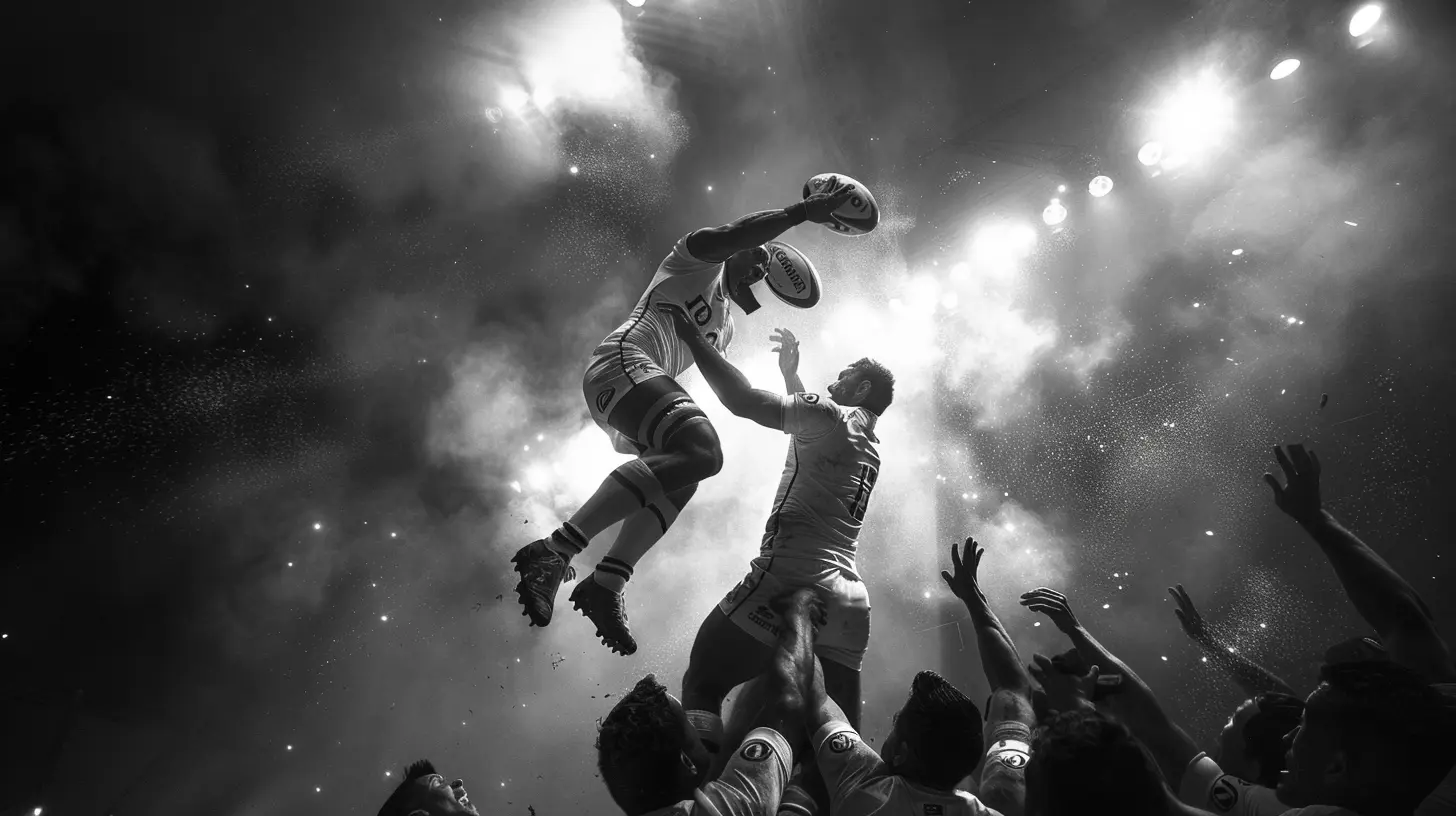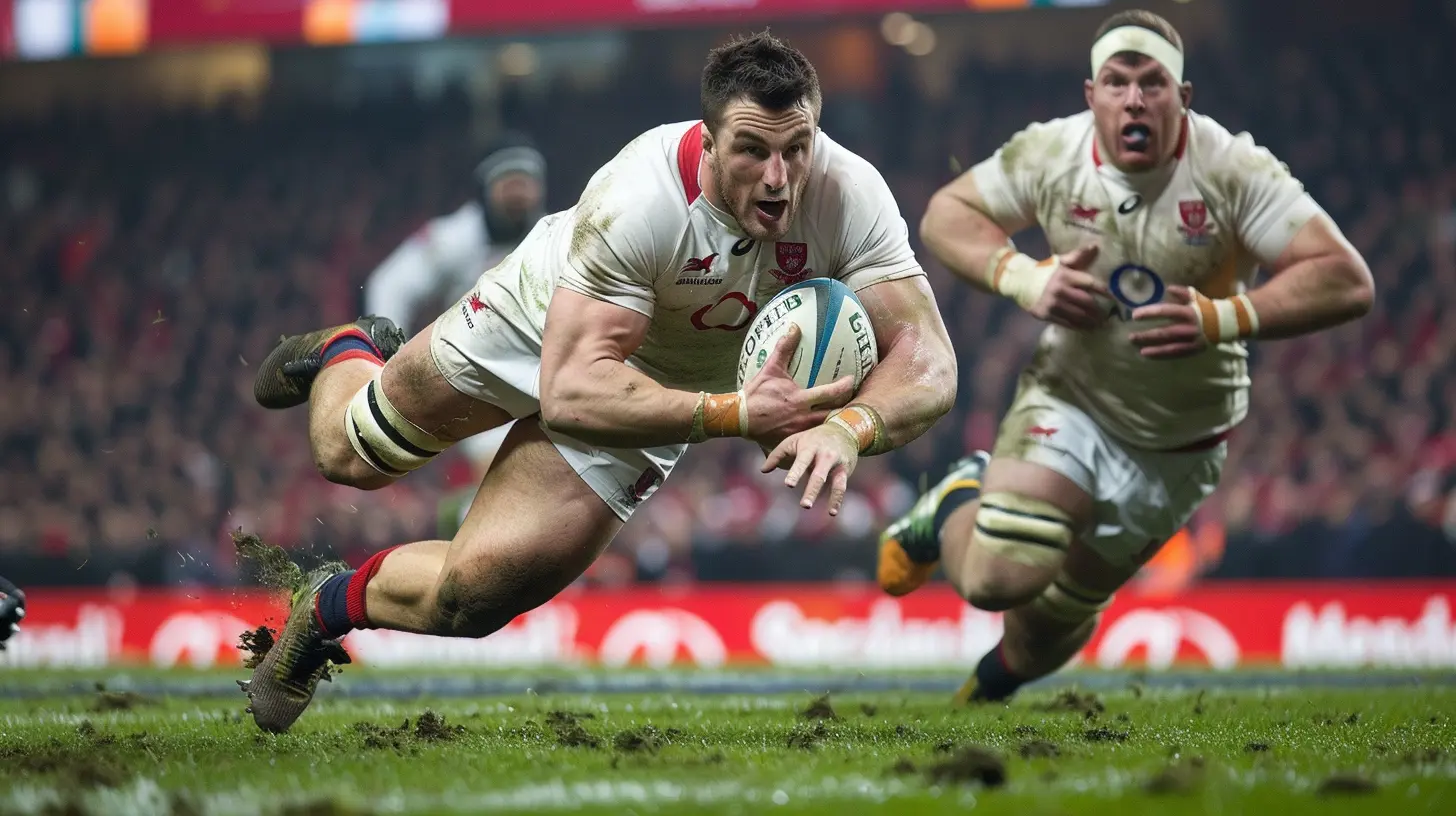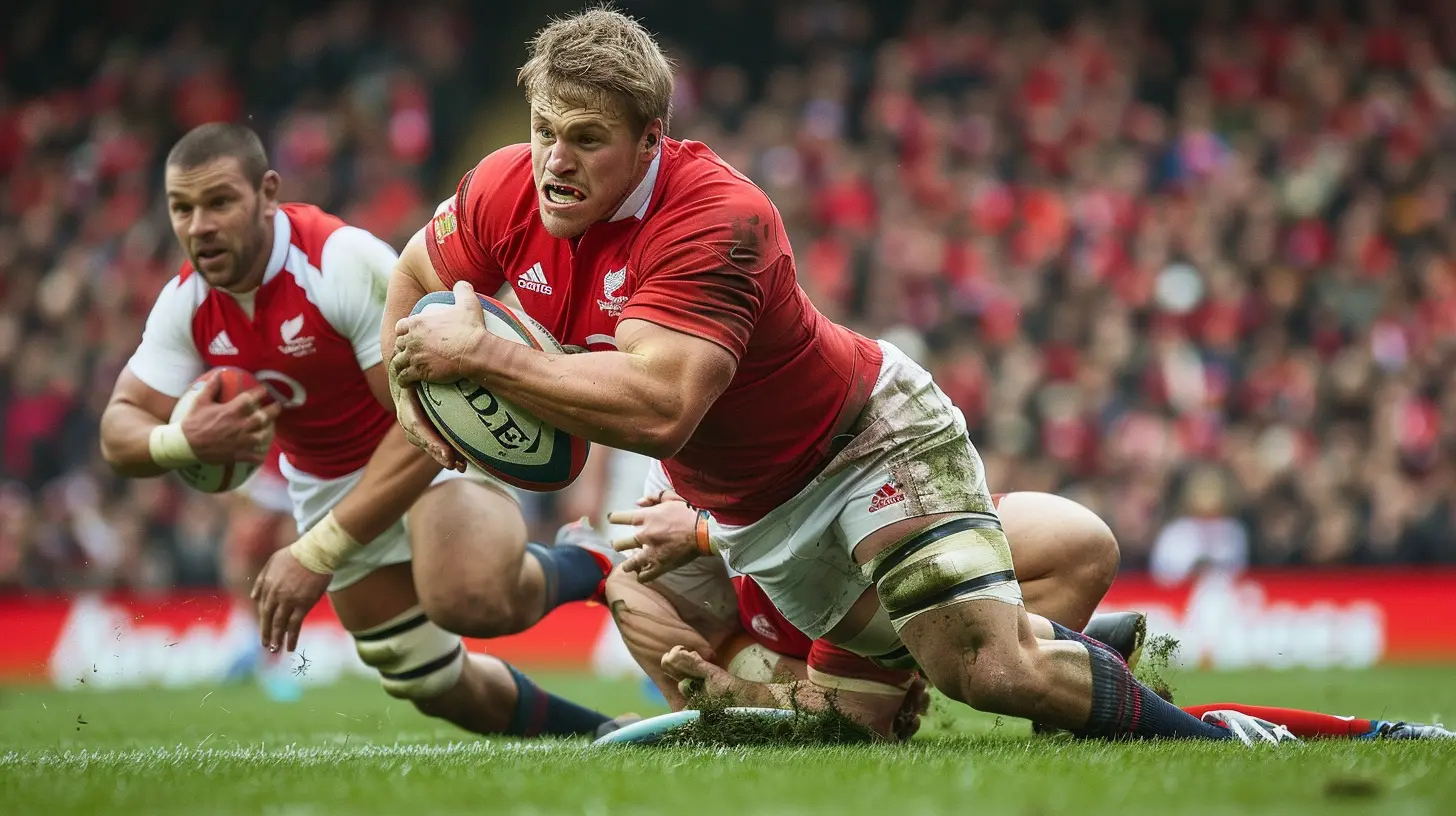The Role of the Fly-Half: Orchestrating the Perfect Attack
29 March 2025
When you watch a rugby game, there’s one player who stands out not just for their physical prowess, but for their ability to read the game like a seasoned chess master, always thinking two or three steps ahead. That player? The fly-half. Often referred to as the "general" on the field, the fly-half is the key playmaker—the one responsible for orchestrating attacks, directing players, and ultimately shaping the flow of the game.
Rugby is a team sport, sure, but the role of the fly-half is so crucial that many games are won or lost based on their decisions. It’s a high-pressure position, but for those who thrive under pressure, it's also one of the most rewarding.

What Exactly Does the Fly-Half Do?
If you're new to rugby or just getting into the nitty-gritty of game tactics, you might wonder: what makes the fly-half so important? Why is this position regarded as the heartbeat of the team?In simple terms, the fly-half is the main decision-maker in attack. They wear the number 10 jersey and are positioned right behind the scrum-half (number 9). When the ball is passed from the scrum-half after a scrum, lineout, or ruck, it usually goes straight to the fly-half, which means they’re often the first player to touch the ball on offense. From there, the options open up: pass to a teammate, kick for territory, or take the ball into contact themselves.
But it’s not just about getting the ball and doing something with it. The fly-half needs to assess the situation in a split second: where are the defenders? Where are my teammates? What’s the weather like? How much time is left on the clock? It’s all about making the right decision at the right time.

The Fly-Half’s Key Responsibilities
1. Game Management
Game management essentially means controlling the flow of the game. A great fly-half knows when to speed up the tempo and when to slow it down. If the team is ahead on the scoreboard, they might opt for a conservative approach, kicking the ball for territory to keep the opposition pinned back. If they’re chasing a score, they’ll look for more expansive, attacking plays to get their team over the try line.Mastering game management requires not only skill but also experience and a deep understanding of rugby tactics. The best fly-halves in the world—think Dan Carter, Jonny Wilkinson, or Beauden Barrett—are masters of manipulating the game to suit their team's needs. They know when to take risks and when to play it safe.
2. Kicking
One of the fly-half’s most valuable tools is their boot. Whether it’s a clever chip over the top of the defense, a cross-field kick to a waiting winger, or a simple punt to gain territory, the fly-half’s kicking game can be the difference between a win and a loss.There are several types of kicks a fly-half must master:
- Grubber kick: A low, bouncing kick aimed to confuse defenders.
- Chip kick: A short kick over the opposing defensive line to catch them off-guard.
- Cross-field kick: A longer, diagonal kick aimed at a winger in open space.
- Territory kick: A deep punt down the field to relieve pressure and push the opposition back.
In addition to these tactical kicks, the fly-half is often tasked with goal-kicking. This is arguably one of the most pressure-packed responsibilities in the game. Imagine standing over a penalty kick or conversion, knowing that the outcome of the match could rest on your shoulders. Not for the faint-hearted!
3. Passing
Passing might seem like a basic skill, but for a fly-half, it’s an art form. They need to be able to pass accurately under pressure, often while being chased down by defenders. But it’s not just about getting the ball from A to B; it’s about timing. A well-timed pass can rip open a defense, creating space for the backs to exploit.Fly-halves must be adept at a variety of passes, including:
- Flat passes: Quick, direct passes that give the receiver no time to lose momentum.
- Loop passes: A pass that allows the fly-half to quickly loop around and participate in the next phase of play.
- Miss passes: Skipping one or more players to get the ball out wide quickly.
It’s all about reading the defense. If they’re pressing hard, a quick pass might be needed to get the ball out wide before the defense can realign. If they’re sitting back, taking the ball into contact might be the better option. The fly-half needs to make these decisions in a heartbeat.
4. Decision Making Under Pressure
If there’s one thing a fly-half must excel at, it’s making split-second decisions. The best fly-halves have an almost sixth sense when it comes to reading the game. They can see spaces that others don’t, anticipating where the defense will be before they’ve even moved.In rugby, chaos is constant, and the fly-half is responsible for bringing order. Whether it’s a quick pass to the outside backs or a well-placed kick to relieve pressure, the fly-half needs to stay calm under pressure and make the right call.
A wrong decision can lead to turnovers, missed opportunities, or even conceding a try. A right decision, however, can lead to a game-winning score.
5. Communication
A fly-half is like the conductor of an orchestra. They might not be making every tackle, but they’re telling everyone else where to go, what to do, and when to do it. Their voice should be one of the loudest on the field because they’re the ones dictating the rhythm of play.Not only do they need to communicate with their fellow backs, but also with the forwards. They’ll often direct the pack where to set up for the next phase of play or call for a specific move off a scrum or lineout. Communication is key in rugby, and no one communicates more than the fly-half.

The Fly-Half Archetypes
Not all fly-halves are created equal. While they all share the same basic responsibilities, different players bring different styles to the position. Broadly speaking, you can categorize fly-halves into a few archetypes:1. The Playmaker
This fly-half thrives on creativity. They’re always looking for ways to break open the game with a clever pass, an unexpected kick, or a darting run. Think of them as the artist on the field, always looking to paint a masterpiece.2. The Kicking Specialist
Some fly-halves are known more for their boots than their hands. These players might not be the most dynamic runners or passers, but they can control a game with their pinpoint kicking accuracy. They’re especially valuable in wet or windy conditions when running rugby becomes more difficult.3. The All-Rounder
The best fly-halves are versatile players who can do a bit of everything. They can kick, pass, and run with equal proficiency, and they’re equally comfortable playing a conservative or expansive game. These players are rare, but when you find one, they can lead a team for years.
Fly-Half: More Than Just a Position
Being a fly-half isn’t just about having the right skills; it’s about having the right mindset. You have to be a leader, a thinker, and, above all, a competitor. You have to thrive under pressure because there’s no shortage of it in this position.And while the fly-half might not always get the glory—those tend to go to the players scoring the tries—make no mistake: the fly-half is the engine that makes the team go. Without a strong fly-half, even the most talented team can be left floundering.
Conclusion: Crafting the Perfect Attack Through the Fly-Half
In rugby, a well-executed attack doesn’t happen by accident. It’s crafted, orchestrated, and fine-tuned—usually by the fly-half. This player is more than just a passer or a kicker; they’re the team’s strategist, the one who sees the bigger picture and knows how to exploit the opposition’s weaknesses.The role of the fly-half is demanding, requiring a blend of physical skill, mental sharpness, and tactical awareness. It’s no wonder that fly-halves are often the most celebrated players in the game.
So, the next time you’re watching a rugby match, keep an eye on the number 10. Every pass, every kick, every decision they make is shaping the game in ways you might not even realize. And when the attack finally breaks through the defense for a try, remember—it all started with the fly-half.
all images in this post were generated using AI tools
Category:
RugbyAuthor:

Uziel Franco
Discussion
rate this article
8 comments
Renee Riggs
Could the fly-half be the unsung architect of triumph, weaving strategies hidden from opponent's eyes?
April 28, 2025 at 8:15 PM

Uziel Franco
Absolutely! The fly-half’s strategic vision is crucial, often making game-changing decisions that go unnoticed but are vital for orchestrating successful attacks.
Thistle Cannon
Fly-halves are vital playmakers, shaping strategies and executing game-winning moves.
April 15, 2025 at 12:30 PM

Uziel Franco
Absolutely! Fly-halves are crucial for directing play and making key decisions that can turn the tide of the game. Their vision and tactical execution are essential for executing the perfect attack.
Storm Curry
Great insights on the fly-half's strategic impact! It’s fascinating how their decision-making can elevate the entire team's performance. Looking forward to seeing how upcoming players adapt these strategies!
April 8, 2025 at 10:41 AM

Uziel Franco
Thank you! I’m glad you found the insights valuable. It will be exciting to see how new talent embraces these strategies in the future!
Margaret Bryant
Fly-halves: Masters of the game’s rhythm!
April 8, 2025 at 2:33 AM

Uziel Franco
Absolutely! Fly-halves are crucial in dictating pace and flow, ensuring the team's strategy unfolds seamlessly.
Katalina Lewis
The fly-half's pivotal role transcends mere playmaking; their strategic vision, decision-making, and adaptability are crucial in transforming potential into impactful, cohesive team attacks.
April 7, 2025 at 4:52 AM

Uziel Franco
Thank you! I completely agree—fly-halves are essential in turning strategy into action, guiding the team to execute seamless and effective attacks.
Oren Kline
Great insights on the crucial role of the fly-half! Your analysis beautifully highlights how their decision-making and strategic vision can significantly influence the flow of the game. Well done!
March 31, 2025 at 11:35 AM

Uziel Franco
Thank you for your kind words! I'm glad you found the insights on the fly-half's impact valuable.
Ashley Burton
Ah, the fly-half: because who wouldn’t want to be the team’s designated decision-maker, playmaker, and occasional hero while everyone else just runs around like headless chickens?
March 31, 2025 at 3:39 AM

Uziel Franco
Absolutely! The fly-half is pivotal in executing strategies, making split-second decisions, and guiding the team's attack, turning chaos into coordinated brilliance.
Margaret McRae
The fly-half's ability to read the game and make split-second decisions is crucial for successful attacking plays. Their vision and tactical awareness often dictate a team's offensive rhythm.
March 29, 2025 at 1:21 PM

Uziel Franco
Absolutely! The fly-half's keen insight and quick thinking are essential for executing effective attacking strategies and maintaining the team's offensive momentum.
MORE POSTS

Breaking Down the Components of a Record-Breaking Marathon
![The Ultimate Playmaker: How [Player Name] Sees the Game Differently](/pictures/blog/small/the-ultimate-playmaker-how-player-name-sees-the-game-differently_2.webp)
The Ultimate Playmaker: How [Player Name] Sees the Game Differently

The Best Triathlon Training Camps Around the World

How Sponsorship Deals are Shaping the Future of Sports

Top Gym Bags to Carry All Your Essential Training Gear
![Why [Player Name] is the Most Feared Player in the League](/pictures/blog/small/why-player-name-is-the-most-feared-player-in-the-league_2.webp)
Why [Player Name] is the Most Feared Player in the League